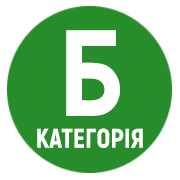KNOWLEDGE MARKETING IN HIGHER EDUCATION: A DIFFERENT VIEW ON EDUCATIONAL SERVICES PROPERTIES
Abstract
The article is devoted to creating a new understanding of the "tangibility" of the service as applied to the marketing of educational products and the role of feelings, sensations, and immersion in the formation of a successful strategy for forming an idea of an educational program. As part of the work, bibliometric analysis and the abstract-logical method were used to describe the immersive marketing of educational services. During the bibliometric analysis, the relationship between the concepts of "neuromarketing", "sensitive marketing" and "immersive marketing" was searched. The resulting set of related keywords from the bibliometric analysis allows us to assert the presence of two common vectors in different types of marketing: consumer behavior and a set of digital marketing tools. A "broad" approach to forming an immersive marketing strategy is presented, which goes beyond the use of virtual and augmented reality tools. The use of neuromarketing (feelings), and sensory marketing (feelings) enables "immersion", which is what immersive marketing provides. The proposed concept of immersive marketing allows you to revise the approach that claims the "intangibility" of an educational service. It is possible to experience the service due to a multi-stage, diversified influence on the potential consumer. This impact should be adjusted to service feedback and behavioral research conducted. In this case, the approaches to demonstrating dowries at promotional events are changing. The "tangibility" of an educational service becomes real and ensuring familiarity with it before its purchase is not with the help of descriptive tools but with the use of "immersion" of the consumer in the service – a decisive step for institutions of higher education.
References
15 Effective Higher Education Marketing Trends for 2022–2023 (2022). URL: https://www.thinkorion.com/ blog/higher-education-marketing-trends
Barnes, S. (2016). Understanding Virtual Reality in Marketing: Nature, Implications and Potential (November 3, 2016). URL: https://ssrn.com/abstract=2909100 or http://dx.doi.org/10.2139/ssrn.2909100
Donthu, N., Kumar, S., Mukherjee, D., Pandey, N., & Lim, W. M. (2021). How to conduct a bibliometric analysis: An overview and guidelines. Journal of Business Research, 133, 285–296.
Hudders, L. & Lou, C (2022). A new era of influencer marketing: Lessons from Recent Inquires and Thoughts on Future Directions. International Journal of Advertising, 41(1), 1–5.
Kubjatkova, A. (2021). The Influence of Sensitivity Analysis on the Process of Price Decision Making and Pricing of the Company. SHS Web of Conferences 92, 02035.
Tom Dieck, M.C., & Han D.D. (2022). The role of immersive technology in Customer Experience Management. Journal of Marketing Theory and Practice, 30(1), 108–119. DOI: https://doi.org/10.1080/10696679.2021.1891939
Vences, N.A., Díaz-Campo, J., & Rosales, D.F.G. (2020). Neuromarketing as an Emotional Connection Tool Between Organizations and Audiences in Social Networks. A Theoretical Review. Frontiers in Psychology, 11, 1787.
Білоусова, С.В. Маркетинг освітніх послуг: стан, тенденції, перспективи. Бізнес-Навігатор. 2015. № 1(36). С. 39–43.
Проєкт Стратегії маркетингу послуг з вищої освіти на міжнародному освітньому ринку. URL: https://mon.gov.ua/ua/news/proyekt-strategiyi-marketingu-poslug-z-vishoyi-osviti-na-mizhnarodnomu-osvitnomu-rinku-gromadske-obgovorennya
Річний звіт Національного агентства із забезпечення якості вищої освіти за 2021 рік / За заг. ред. С. Квіта. Київ : Національне агентство із забезпечення якості вищої освіти, 2022. 232 с.
15 Effective Higher Education Marketing Trends for 2022–2023 (2022). Available at: https://www.thinkorion.com/blog/higher-education-marketing-trends
Barnes, S. (2016). Understanding Virtual Reality in Marketing: Nature, Implications and Potential (Novem-ber 3, 2016). Available at: https://ssrn.com/abstract=2909100 or http://dx.doi.org/10.2139/ssrn.2909100
Donthu, N., Kumar, S., Mukherjee, D., Pandey, N., & Lim, W. M. (2021). How to conduct a bibliometric analysis: An overview and guidelines. Journal of Business Research, 133, 285–296.
Hudders, L. & Lou, C (2022). A new era of influencer marketing: Lessons from Recent Inquires and Thoughts on Future Directions. International Journal of Advertising, 41(1), 1–5.
Kubjatkova, A. (2021). The Influence of Sensitivity Analysis on the Process of Price Decision Making and Pricing of the Company. SHS Web of Conferences 92, 02035.
Tom Dieck, M.C., & Han D.D. (2022). The role of immersive technology in Customer Experience Manage-ment. Journal of Marketing Theory and Practice, 30(1), 108–119. DOI: https://doi.org/10.1080/10696679.2021.1891939
Vences, N.A., Díaz-Campo, J., & Rosales, D.F.G. (2020). Neuromarketing as an Emotional Connection Tool Between Organizations and Audiences in Social Networks. A Theoretical Review. Frontiers in Psychology, 11, 1787.
Bilousova, S.V. (2015). Marketynh osvitnikh posluh: stan, tendentsii, perspektyvy. Biznes-Navihator, no. 1(36), рр. 39–43.
Proiekt Stratehii marketynhu posluh z vyshchoi osvity na mizhnarodnomu osvitnomu rynku. Available at: https://mon.gov.ua/ua/news/proyekt-strategiyi-marketingu-poslug-z-vishoyi-osviti-na-mizhnarodnomu-osvit¬nomu-rinku-gromadske-obgovorennya
Richnyi zvit Natsionalnoho ahentstva iz zabezpechennia yakosti vyshchoi osvity za 2021 rik (2022) / Za zah. red. S. Kvita. Kyiv: Natsionalne ahentstvo iz zabezpechennia yakosti vyshchoi osvity, 232 р.







